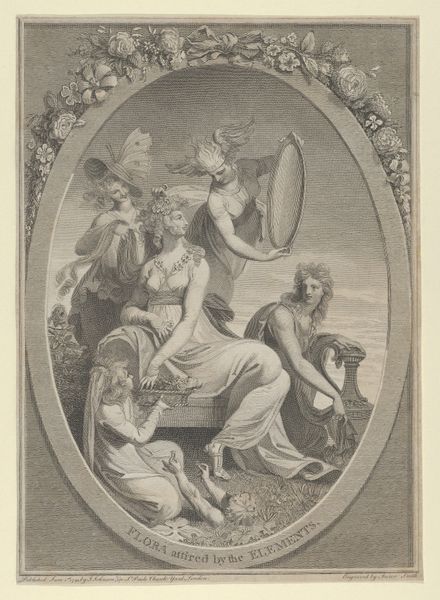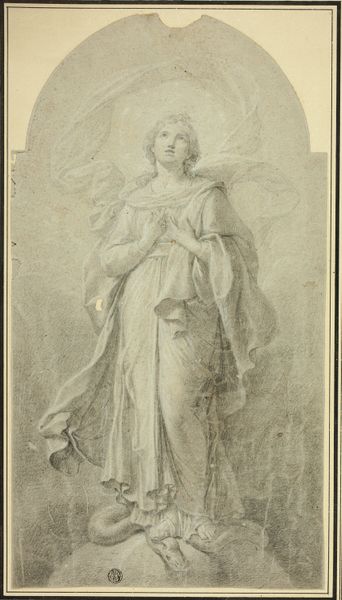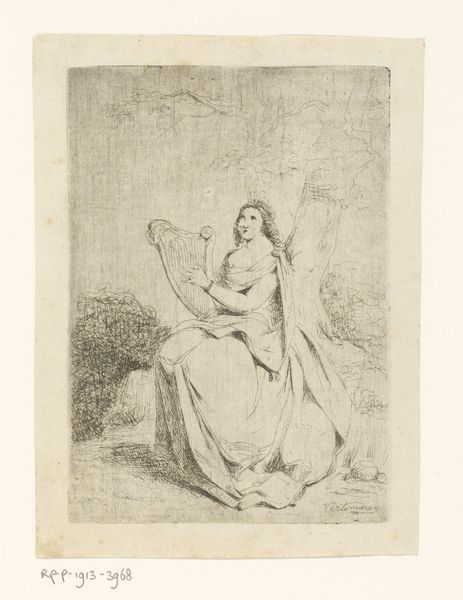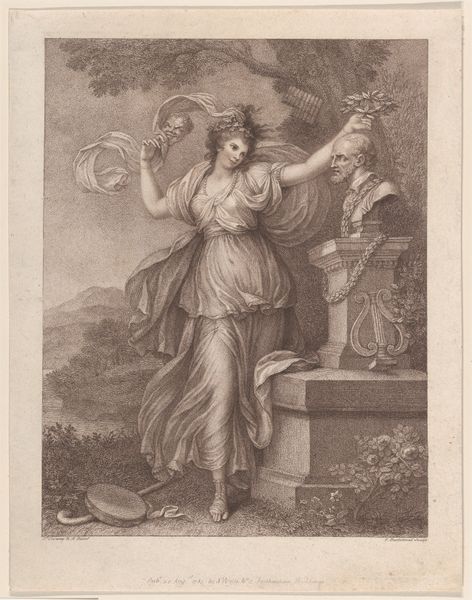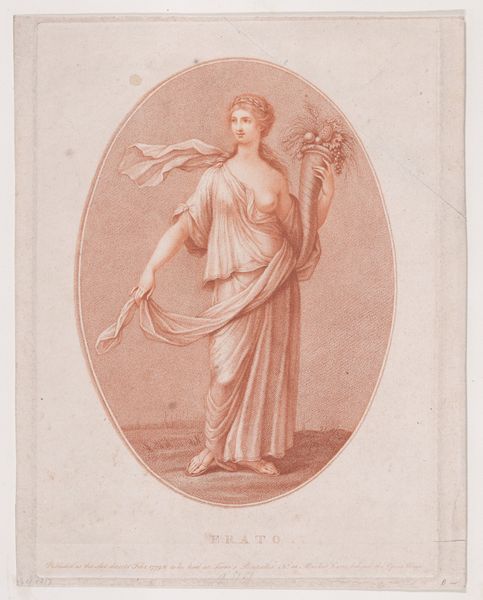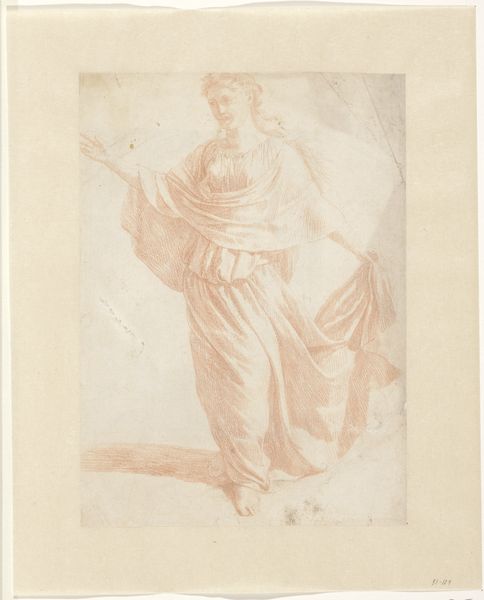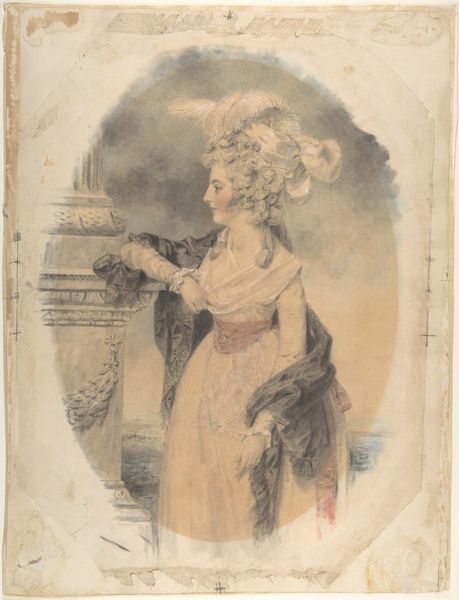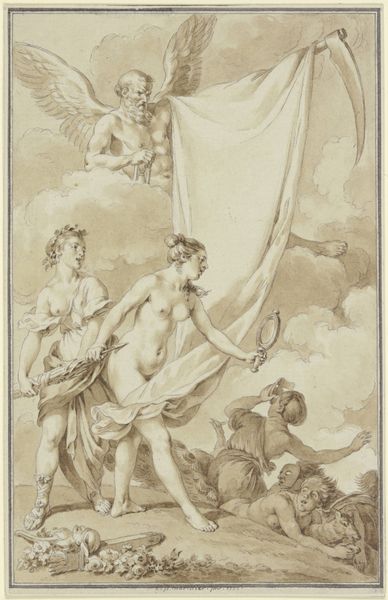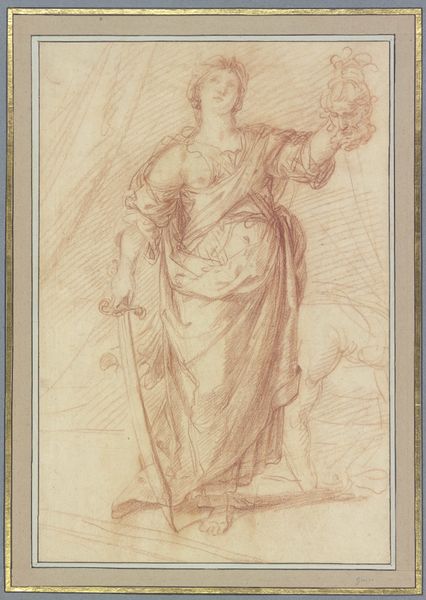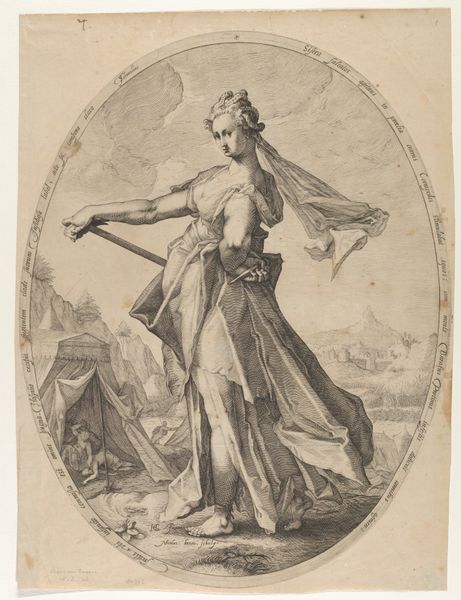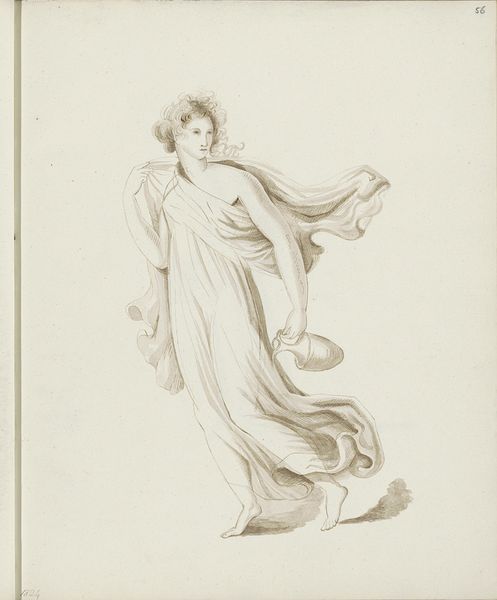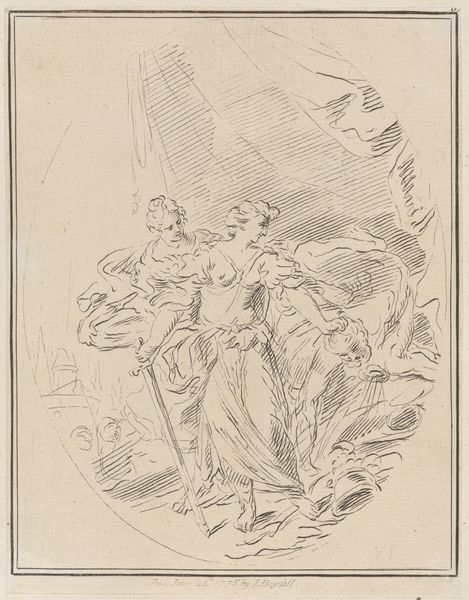
drawing, print, pencil
#
portrait
#
drawing
#
neoclacissism
#
allegory
# print
#
pencil drawing
#
pencil
#
history-painting
#
academic-art
Dimensions: sheet: 12 5/8 x 9 3/8 in. (32.1 x 23.8 cm)
Copyright: Public Domain
Curator: This drawing, dating from the early 19th century, is by Richard Cosway. It portrays Lavinia, Countess Spencer, as Juno, queen of the gods. What are your initial impressions? Editor: The delicacy is striking. The soft rendering of the pencil gives everything an ethereal, almost ghostly, quality. You immediately notice how whiteness, achieved through light pencil strokes, shapes forms in the imagined scene. Curator: Indeed. Cosway masterfully employs line and tone to convey both texture and volume. Note how Lavinia’s classical drapery falls, creating elegant folds that emphasize the underlying structure of her body. Editor: The textile production here interests me. Cosway chooses a medium that replicates a delicate visual effect, somewhat mimicking the light weight of the material the Countess wears. How intentional this reference may be, is unclear, however. This work reveals the historical and gendered divisions of art production as pencil and paper were once more available and thus tied to amateur art practices suitable for middle-class and upper-class ladies, as opposed to what were considered "serious arts". Curator: The allegorical nature also reflects prevailing neoclassical tastes. Cosway has constructed an idealized portrayal that goes beyond a simple likeness. Observe how Lavinia's refined features and graceful pose allude to Juno's regal status. Even the peacock is employed, connoting majesty and watchfulness. Editor: But aren’t these trappings – the pose, the cupid above, and especially that ghostly peacock - precisely what marks this as an exercise in aristocratic vanity? Consider the labor required, both in Cosway's draftsmanship, the time of Countess Spencer posing, as well as Lavinia’s position that enabled this form of display and consumption. It highlights the socio-economic structures upheld by portraiture of the era. Curator: To be fair, though Cosway clearly worked within certain social constraints, we can still admire the drawing for its aesthetic composition. I, for one, am moved by the harmony between figure and ground; this reflects his undeniable skill in manipulating the graphic vocabulary to produce an aesthetically balanced work. Editor: I concede to Cosway's technical skills. My analysis hopes to also extend the dialogue about works like this into the cultural and economic circumstances of their production and reception. These dimensions have, historically, not been included in discussions around the creative arts. Curator: A crucial addition, highlighting layers beneath formal aesthetics! Editor: Exactly! It offers us insights that expand appreciation.
Comments
No comments
Be the first to comment and join the conversation on the ultimate creative platform.
